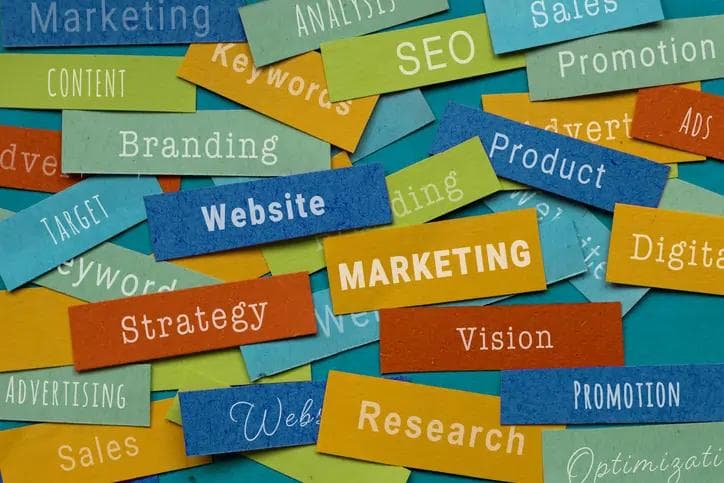What are the trends for e-commerce in 2022?
What are the trends for e-commerce in 2022?
Published by maria gbaf
Posted on January 14, 2022

Published by maria gbaf
Posted on January 14, 2022

By Jim Meadows, chief strategy officer at TAKUMI
If 2020 was the year of the e-commerce boom, with apps like TikTok and Instagram expanding their e-commerce capabilities and consumers increasingly acclimatising to online shopping, then last year was the year the industry hit major challenges. Debates around data privacy challenges, the ongoing battle for market domination between Facebook and Apple, global supply chain issues affecting merchants, and controversial social media rebrands have all accumulated into one gigantic headache for the e-commerce sector. As we begin 2022, it appears the sector is at a crossroads where these challenges must be addressed for the industry to evolve.
As we enter yet another pandemic defined year, many marketers will be wondering, given the challenges faced, what will happen to global commerce? What new trends will define e-commerce? And most important, how can entrepreneurs and brands prepare for – and take advantage of – rapidly evolving e-commerce trends this year?
The changes in e-commerce in 2021
2021 was the year the rivalry between Facebook and Apple went nuclear. For years, these two industry behemoths have been locked in a war of words around user data, with Apple claiming that people should always be informed if and how their personal data is being used.
More recently, in what many saw as a thinly veiled reference to Facebook, Apple’s chief executive Tim Cook said: “If a business is built on misleading users, on data exploitation, on choices that are no choices at all, it does not deserve our praise. It deserves reform.”
And in April last year, the technology firm put these words into action through a new feature update which caused a huge rift between Apple and Facebook. The row focused on a change to the unique device identifier on every iPhone and iPad – more commonly called the IDFA, which companies, including Facebook, use to both target ads to users and estimate their effectiveness. But, through an iOS 14.5 update that introduced a new App Tracking Transparency feature, app developers now must explicitly ask for permission from users to use this IDFA – and a survey suggested up to 80% would say no.
Personalisation and zero-party data will become critical
The result was that many commerce brands saw a big decrease in the effectiveness of their ads. And brands heavily reliant on Facebook ads – which place IDFAs at the core of its strategy – saw a dip in revenue and greater costs.
This year many brands will have to adapt to this Apple update and future-proof themselves from an even bigger change coming on the horizon – the eventual end of third-party cookie support in Google Chrome. The best way for brands to protect themselves from Google and Apple updates – and lessen their reliance on Facebook’s IDFA centred-approach – is to collect ‘zero-party data’ directly from their customers and leverage it for personalised marketing.
The rise of live shopping
Because of the above changes to ad tracking and user data access, brands will need to diversify the channels they use to engage customers. One option that has been growing in popularity in recent years is Live Shopping – where video live streaming meets e-commerce and social media.
Bombarding customers with targeted ads and other digital marketing can be numbing and, thanks largely to the rising popularity and influence of creators, live shopping is becoming a major – if not the primary – channel for avid shoppers. Although the term ‘Live Shopping’ may evoke memories of stale, old TV adverts for jewellery or, god forbid, vintage coins, there are significant differences between Live Shopping on TV and social media. Instagram, Facebook and TikTok have all introduced Live Shopping features in recent years which allow brands and merchants to turn boring and technical product descriptions into engaging, fun videos. And, through influencers, brands can also create interactive and shoppable content that brings the in-store experience online. The value of influencers in this process cannot be overstated – especially given that our whitepaper, Influencer Marketing in the Pandemic Era, which surveyed over 3,000 influencers, marketers and consumers across the US and UK, found that nearly half (46%) of UK and US consumers said they’d been influenced to buy a product or service from a creator in the past 12-months. This has been supported by a rise in marketers integrating e-commerce tools into their influencer marketing activity, with over half (59%) having reported an increase compared to pre-pandemic according to our research.
Already, Live Shopping has become a multibillion-pound success story in China – on Singles Day last year, the Chinese live streaming platform Taobao Live sold £5.3 billion worth of products in less than half an hour. And, in Europe, it is predicted that social commerce will reach $7.46bn in the UK by 2023, of which $3.3bn will be from Live Shopping.
Influencer marketing agencies are also boosting their campaign tracking and insight capabilities, such as TAKUMI which has recently announced a partnership with ThisThat, a leading insight partner for influencer campaigns. These improved attribution models allow brands using influencers for Live Shopping or long-term creator campaigns to access a 360-degree view of performance at the start, during, and after the campaign. This facilitates campaign optimisation and enables brands to engage hard to reach consumers at various stages of the purchasing final.
Last year was disruptive to the progress of the e-commerce industries, with many obstacles emerging around access to personal data and the future of tracking. As we continued to progress through 2022, the onus will be on brands to adapt and overcome these challenges by relying more heavily on influencers, Live Shopping and personalised data to boost sales and attract more consumers.
By Jim Meadows, chief strategy officer at TAKUMI
If 2020 was the year of the e-commerce boom, with apps like TikTok and Instagram expanding their e-commerce capabilities and consumers increasingly acclimatising to online shopping, then last year was the year the industry hit major challenges. Debates around data privacy challenges, the ongoing battle for market domination between Facebook and Apple, global supply chain issues affecting merchants, and controversial social media rebrands have all accumulated into one gigantic headache for the e-commerce sector. As we begin 2022, it appears the sector is at a crossroads where these challenges must be addressed for the industry to evolve.
As we enter yet another pandemic defined year, many marketers will be wondering, given the challenges faced, what will happen to global commerce? What new trends will define e-commerce? And most important, how can entrepreneurs and brands prepare for – and take advantage of – rapidly evolving e-commerce trends this year?
The changes in e-commerce in 2021
2021 was the year the rivalry between Facebook and Apple went nuclear. For years, these two industry behemoths have been locked in a war of words around user data, with Apple claiming that people should always be informed if and how their personal data is being used.
More recently, in what many saw as a thinly veiled reference to Facebook, Apple’s chief executive Tim Cook said: “If a business is built on misleading users, on data exploitation, on choices that are no choices at all, it does not deserve our praise. It deserves reform.”
And in April last year, the technology firm put these words into action through a new feature update which caused a huge rift between Apple and Facebook. The row focused on a change to the unique device identifier on every iPhone and iPad – more commonly called the IDFA, which companies, including Facebook, use to both target ads to users and estimate their effectiveness. But, through an iOS 14.5 update that introduced a new App Tracking Transparency feature, app developers now must explicitly ask for permission from users to use this IDFA – and a survey suggested up to 80% would say no.
Personalisation and zero-party data will become critical
The result was that many commerce brands saw a big decrease in the effectiveness of their ads. And brands heavily reliant on Facebook ads – which place IDFAs at the core of its strategy – saw a dip in revenue and greater costs.
This year many brands will have to adapt to this Apple update and future-proof themselves from an even bigger change coming on the horizon – the eventual end of third-party cookie support in Google Chrome. The best way for brands to protect themselves from Google and Apple updates – and lessen their reliance on Facebook’s IDFA centred-approach – is to collect ‘zero-party data’ directly from their customers and leverage it for personalised marketing.
The rise of live shopping
Because of the above changes to ad tracking and user data access, brands will need to diversify the channels they use to engage customers. One option that has been growing in popularity in recent years is Live Shopping – where video live streaming meets e-commerce and social media.
Bombarding customers with targeted ads and other digital marketing can be numbing and, thanks largely to the rising popularity and influence of creators, live shopping is becoming a major – if not the primary – channel for avid shoppers. Although the term ‘Live Shopping’ may evoke memories of stale, old TV adverts for jewellery or, god forbid, vintage coins, there are significant differences between Live Shopping on TV and social media. Instagram, Facebook and TikTok have all introduced Live Shopping features in recent years which allow brands and merchants to turn boring and technical product descriptions into engaging, fun videos. And, through influencers, brands can also create interactive and shoppable content that brings the in-store experience online. The value of influencers in this process cannot be overstated – especially given that our whitepaper, Influencer Marketing in the Pandemic Era, which surveyed over 3,000 influencers, marketers and consumers across the US and UK, found that nearly half (46%) of UK and US consumers said they’d been influenced to buy a product or service from a creator in the past 12-months. This has been supported by a rise in marketers integrating e-commerce tools into their influencer marketing activity, with over half (59%) having reported an increase compared to pre-pandemic according to our research.
Already, Live Shopping has become a multibillion-pound success story in China – on Singles Day last year, the Chinese live streaming platform Taobao Live sold £5.3 billion worth of products in less than half an hour. And, in Europe, it is predicted that social commerce will reach $7.46bn in the UK by 2023, of which $3.3bn will be from Live Shopping.
Influencer marketing agencies are also boosting their campaign tracking and insight capabilities, such as TAKUMI which has recently announced a partnership with ThisThat, a leading insight partner for influencer campaigns. These improved attribution models allow brands using influencers for Live Shopping or long-term creator campaigns to access a 360-degree view of performance at the start, during, and after the campaign. This facilitates campaign optimisation and enables brands to engage hard to reach consumers at various stages of the purchasing final.
Last year was disruptive to the progress of the e-commerce industries, with many obstacles emerging around access to personal data and the future of tracking. As we continued to progress through 2022, the onus will be on brands to adapt and overcome these challenges by relying more heavily on influencers, Live Shopping and personalised data to boost sales and attract more consumers.
Explore more articles in the Business category











